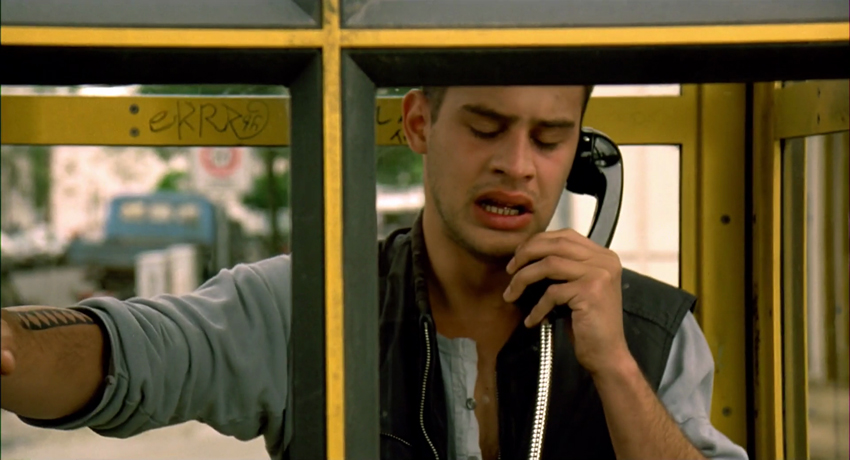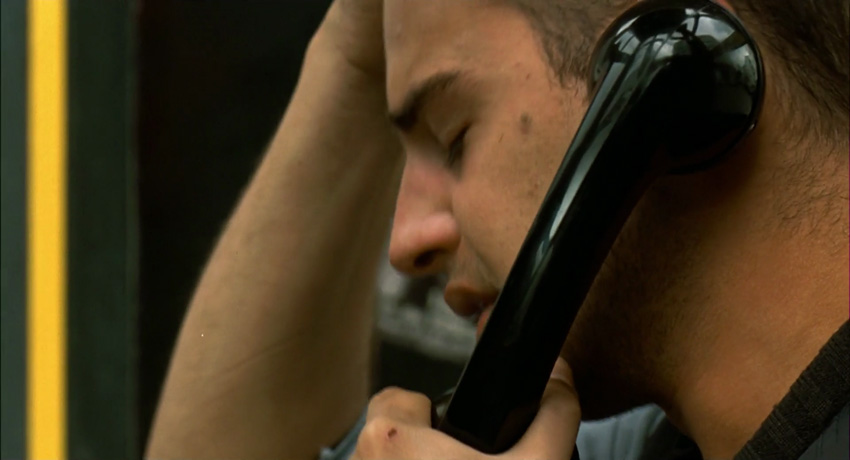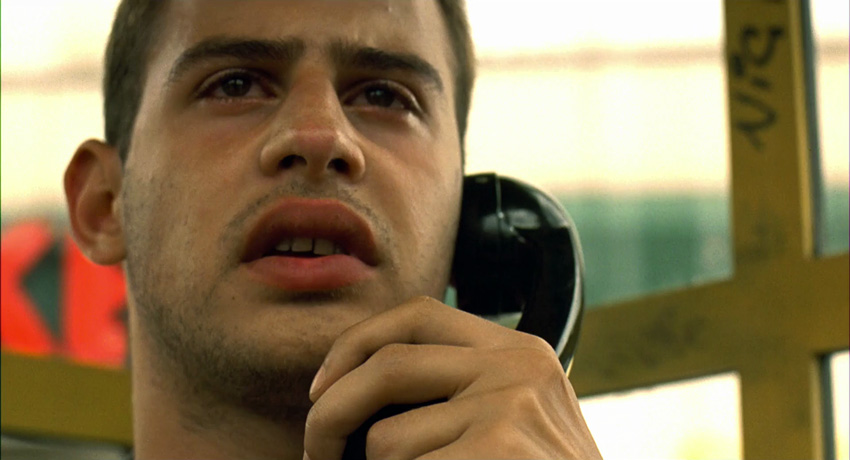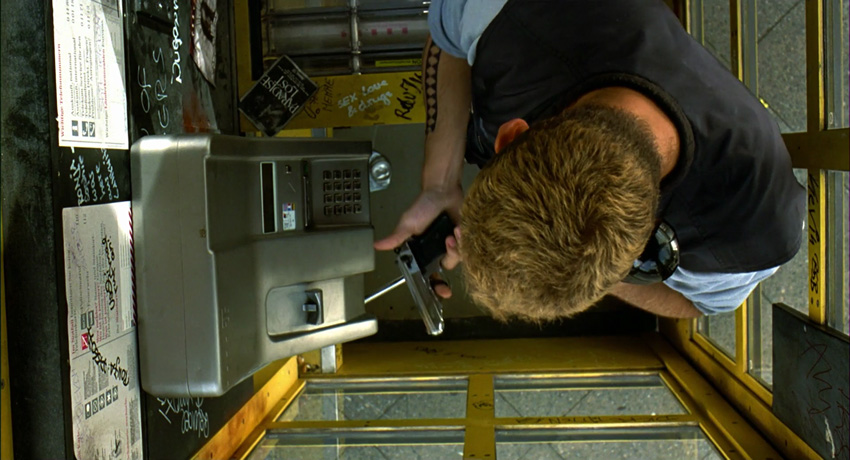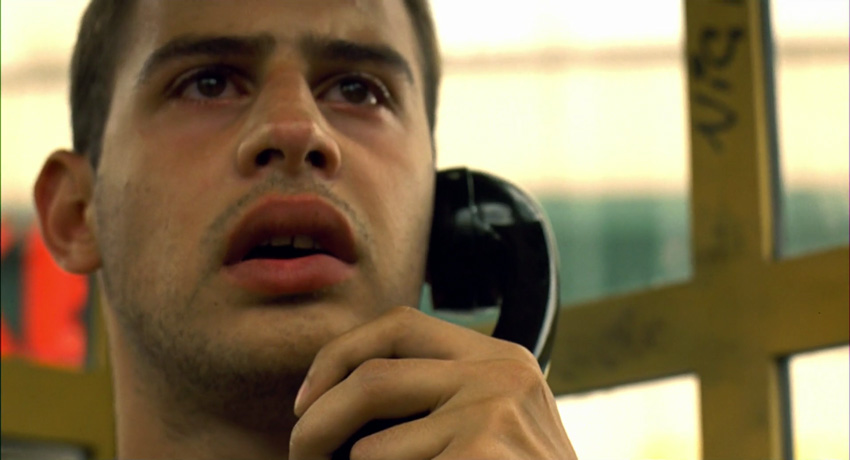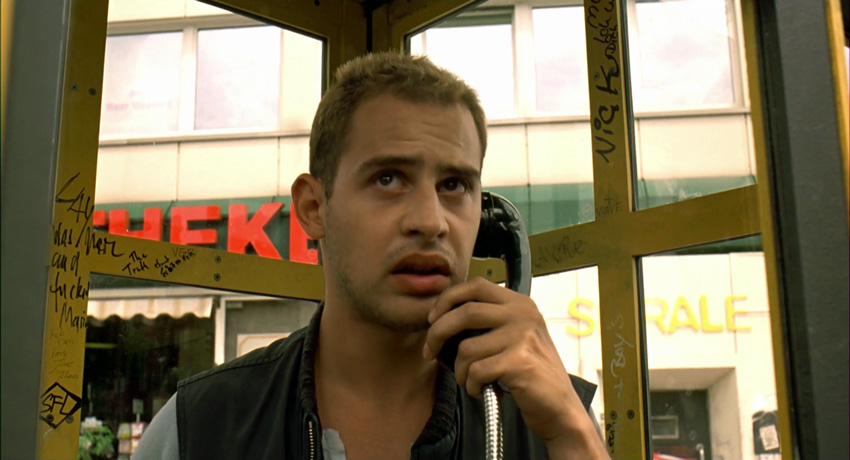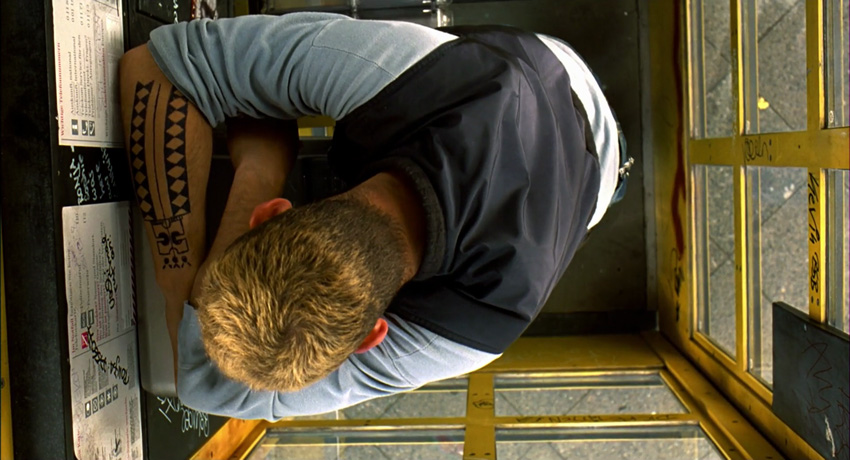Camera perspective
Getting to know and questioning cinematic space design through camera perspectives
The phone box from which Manni calls Lola is one of the most important settings in the film. In this phone box, which was set up especially for the film at an intersection 📍 in the Berlin district of Charlottenburg, the camera observes Manni from a variety of angles.
Key concepts: Camera perspectives
The camera perspective is the angle from which an object is filmed. Together with the camera distance, it defines the viewpoint of the viewer. The angle of the camera strongly influences how the event is perceived by the viewer, because the same object can appear very different when filmed from different angles.
We can make a distinction between the normal view, the view from above and the view from below.
Normal view
The camera is at eye level with the object being filmed. This corresponds most closely to our usual perspective.
Views from above
Views from above are camera angles that are filmed from above eye level. Through the elevated perspective, the viewer looks down on the action from above. This view can be used to emphasise the inferiority of a figure or to give an overview of the situation (Types: High angle, bird's-eye view).
Views from below
The shot is taken below eye level. Because the camera looks up from below, perspective distortions arise that can inspire awe in the viewer. People filmed from a very low angle sometimes seem superior or threatening (Types: low angle, frog's-eye perspective).
We can make a distinction between the normal view, the view from above and the view from below.
Normal view
The camera is at eye level with the object being filmed. This corresponds most closely to our usual perspective.
Views from above
Views from above are camera angles that are filmed from above eye level. Through the elevated perspective, the viewer looks down on the action from above. This view can be used to emphasise the inferiority of a figure or to give an overview of the situation (Types: High angle, bird's-eye view).
Views from below
The shot is taken below eye level. Because the camera looks up from below, perspective distortions arise that can inspire awe in the viewer. People filmed from a very low angle sometimes seem superior or threatening (Types: low angle, frog's-eye perspective).
Task 1
- In the gallery you will find various images of Manni in the phone box. By tapping on the camera symbol, select at least five still images showing different camera perspectives. Describe the views in the still images as either high angle, normal or low angle.
- Add a camera icon for each still image. Decide for each still image: Where was the camera when the shot was taken and where was it pointing? Arrange the camera icons around the phone box and use the blue arrows to indicate the shooting directions.
camera
- Low angle shots often suggest that the filmed person has power. Is this also the case here? Give reasons for your decision.
- Explain how the cinematic space design of the telephone booth reflects Manni's situation.
